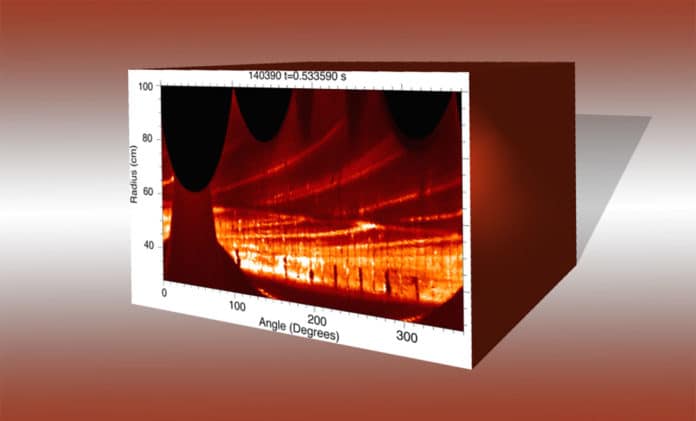Blobs are coherent structures of enhanced plasma pressure relative to the background plasma, which has a filamentary structure, as they typically extend much further along the magnetic field than perpendicular to it.
They can wreak havoc in plasma for fusion reactions. As they swell up at the edge of fusion plasmas and drains heat from the edge, they thus limit the efficiency of fusion reactions in doughnut-shaped fusion facilities called ‘tokamaks.’
Scientists at the U.S. Branch of Energy’s (DOE) Princeton Plasma Physics Laboratory (PPPL) have now found a great relationship of the blobs with fluctuations of the magnetic field that limits the plasma fueling fusion reactions in the device core.
Further examination of this relationship and its job in the loss of heat from magnetic fusion reactors will assist with producing fusion energy on Earth that powers the sun and stars.
Physicist Stewart Zweben, lead author of a paper in Physics of Plasmas, said, “The study has added a new aspect to our understanding of the plasma edge heat loss in a tokamak. This work also contributes to our understanding of the physics of blobs, which can help to predict the performance of tokamak fusion reactors.”
The primary clue to the correlation was the striking regularity of the trajectory of large blobs, which travel at roughly the speed of a rifle bullet. Much blobs normally move randomly in what is called the “scrape-off layer” at the edge of a tokamak plasma, but in some cases, all large blobstraveled at nearly the same angle and speed. Moreover, the time between the appearance of each giant blob at the edge of the plasma was almost always the same, virtually coinciding with the frequency of dominant MHD activity in the plasma edge.
Scientists then tracked the diagnostic signals of the blobs and the MHD activity about each other. They wanted to measure the “cross-correlation coefficient.”
The scientists then analyzed several possible causes of the correlation but were unable to find a compelling explanation.
Physicist Stewart Zweben, lead author of a paper in Physics of Plasmas, said, “To understand and control this phenomenon, further data analysis, and modeling will have to be done.”
Journal Reference:
- S. J. Zweben et al, MHD-blob correlations in NSTX. DOI: 10.1063/5.0006515
